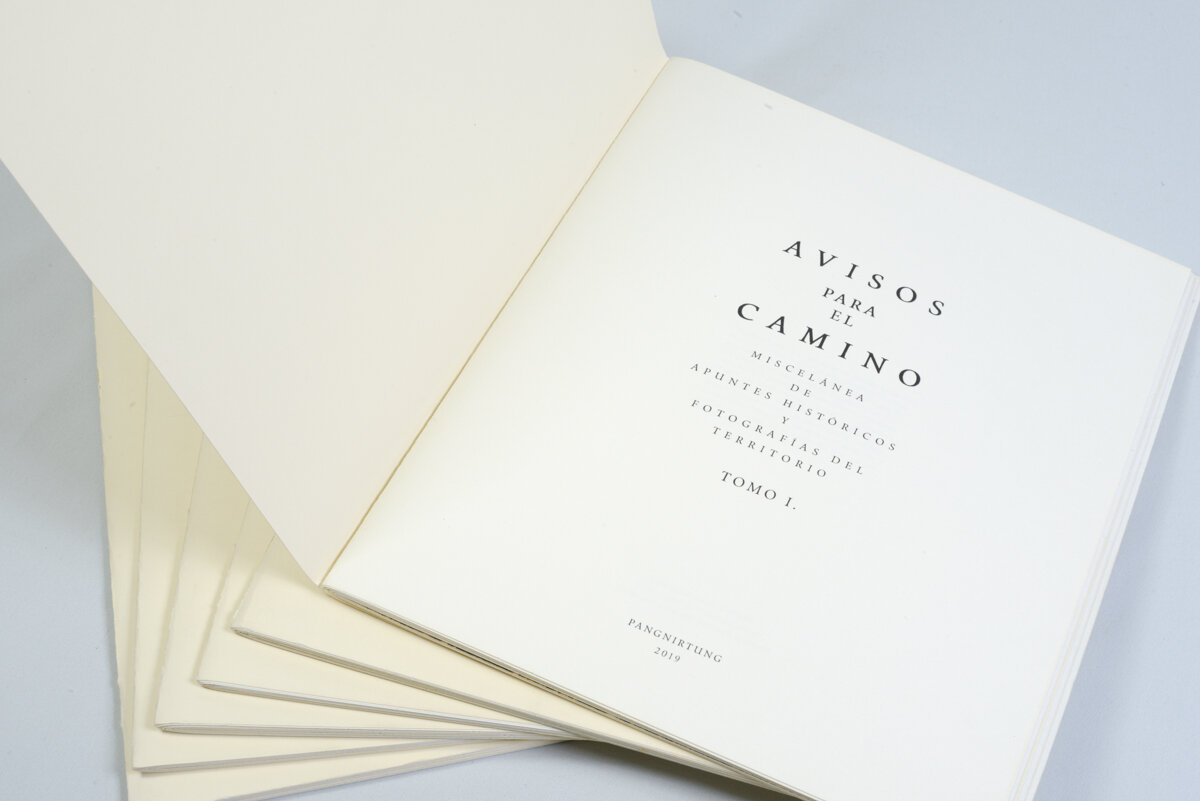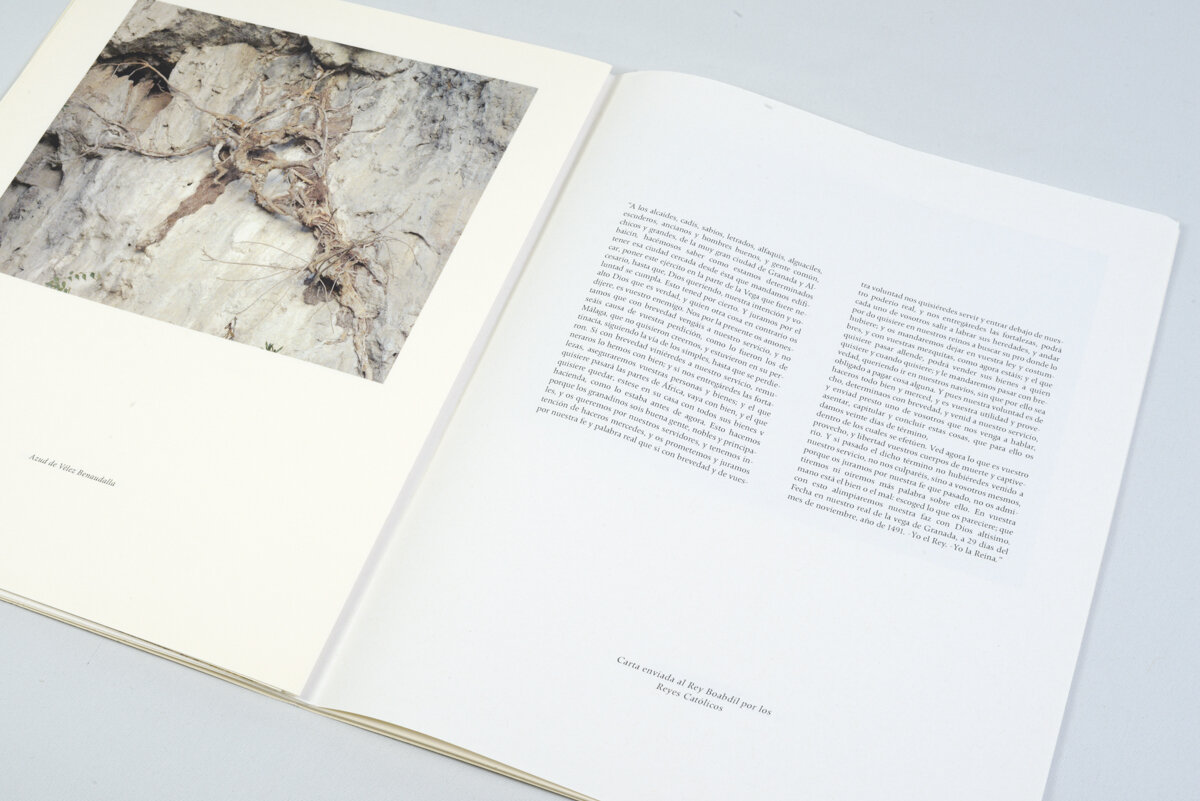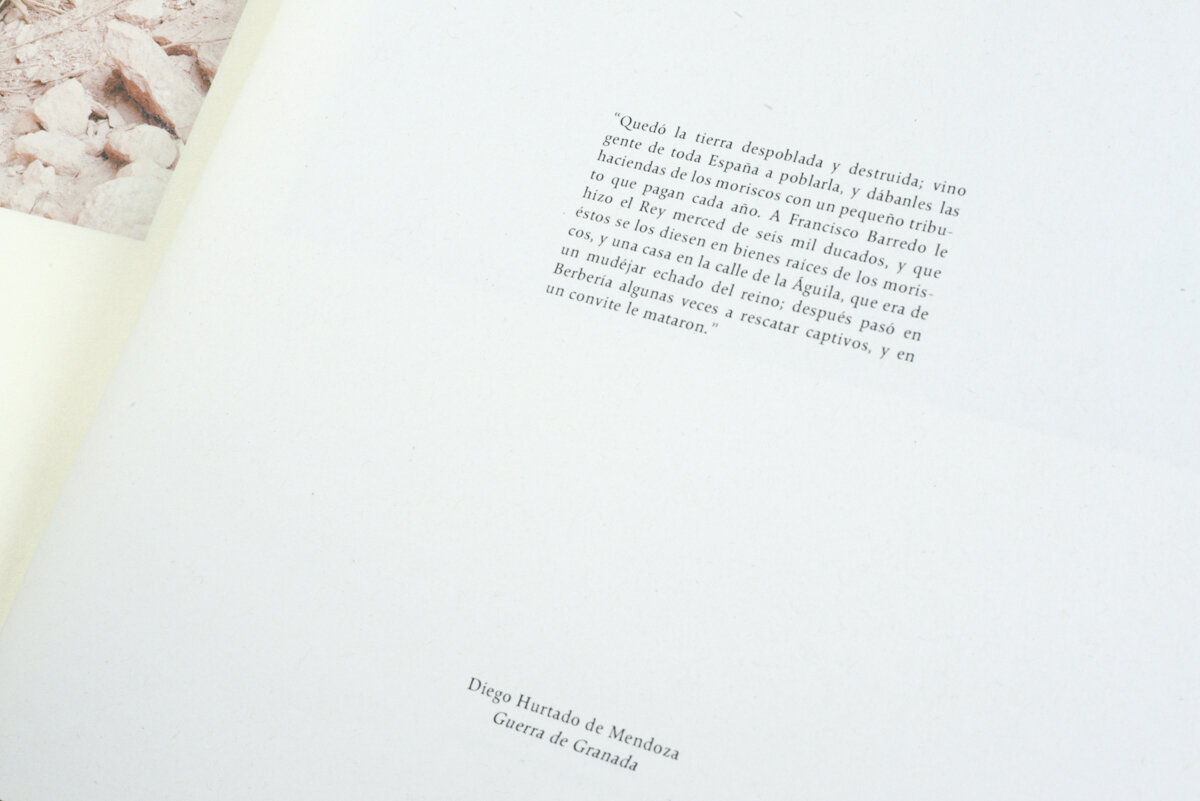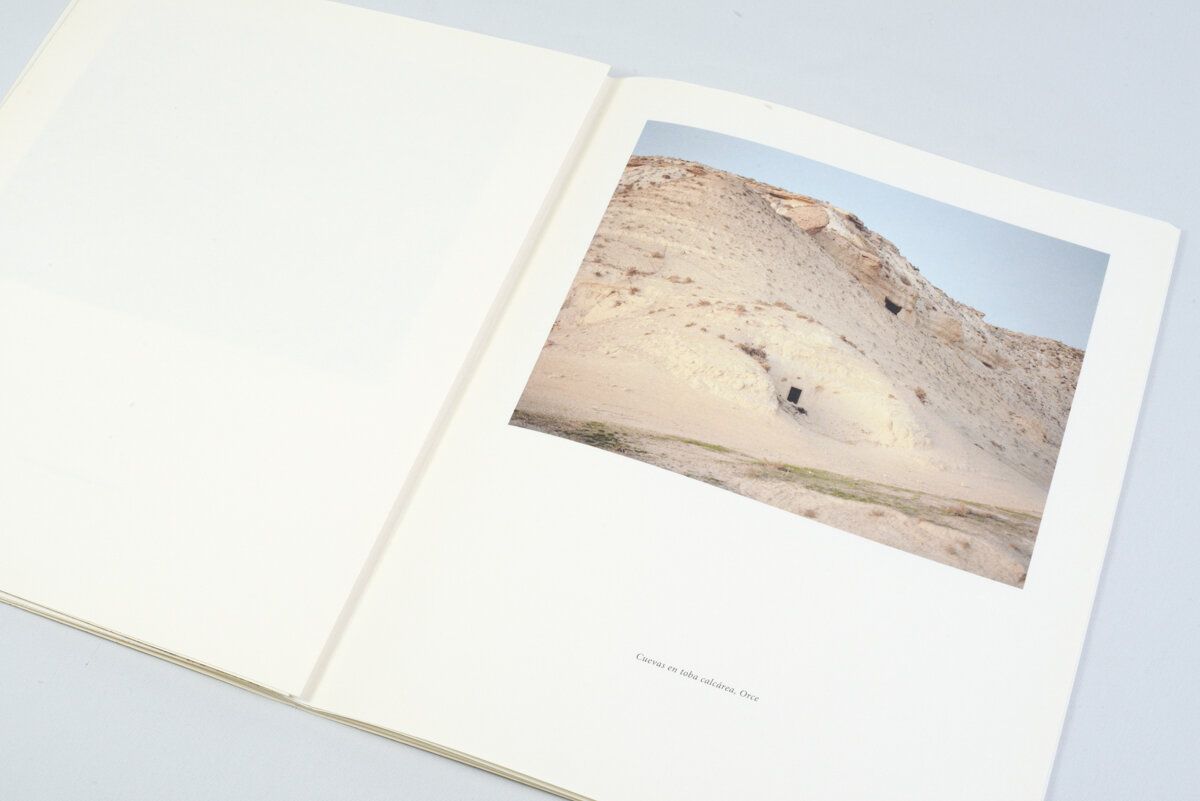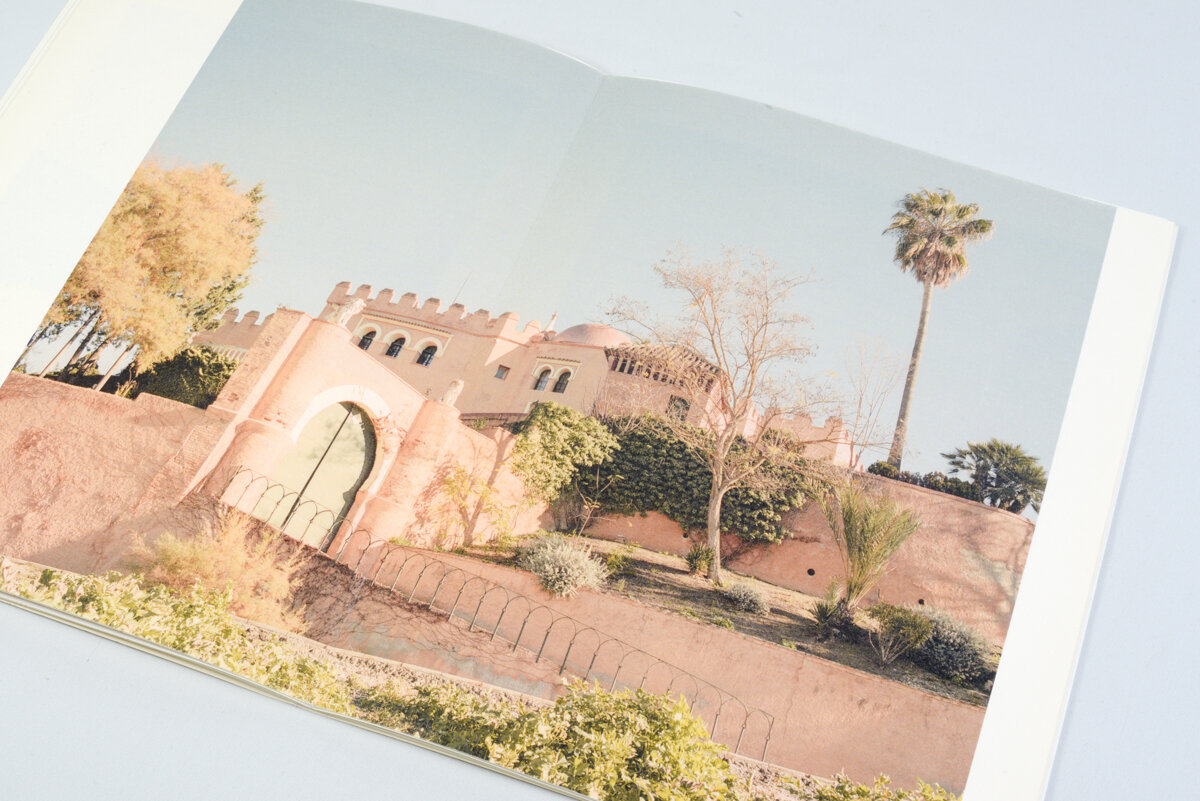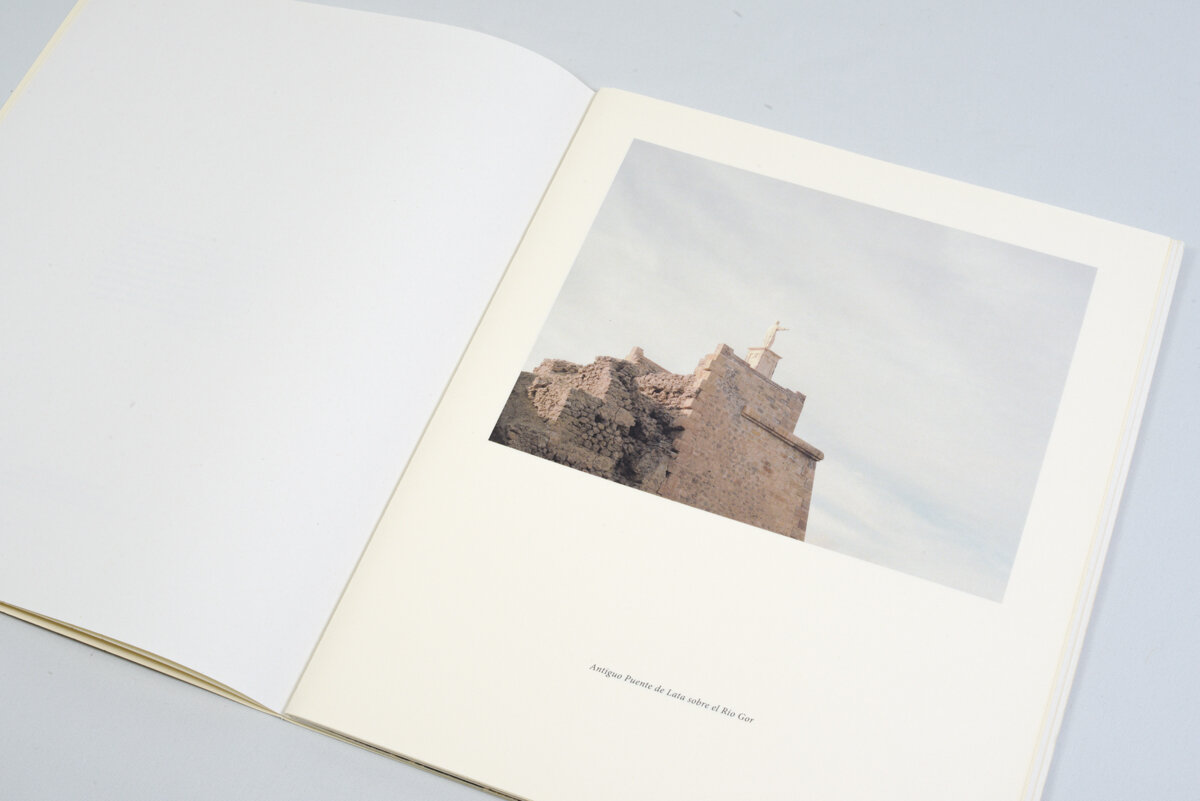AVISOS PARA EL CAMINO
Self-published, 2019
Collection of 6 booklets
22 x 32 cm
Digital print
Project Coordinator: FACBA (Festival Arte Contemporáneo Bellas Artes)
Photographs: Pablo Castilla & Pablo López
Editing and design: PANGNIRTUNG
Printing: Folio, Granada Texts:
-Luis del Mármol Carvajal “Historia del rebelion y castigo de los moriscos del reyno de Granada” (Biblioteca Hospital Real - Fondo UGR)
-Henri Lapeyre “Geografía de la España morisca” (Universitat de València, 2011)
-Diego Hurtado de Mendoza “Guerra de Granada hecha por el rei de España don Philipe II, nuestro señor contra los Moriscos de aquel reino, sus rebeldes.” (Biblioteca Hospital Real – Fondo UGR)
-Mercedes Sánchez Álvarez “El Manuscrito misceláneo 774 de la Biblioteca Nacional de París : leyendas, itinerarios de viajes, profecías sobre la destrucción de España y otros relatos moriscos” (Ed. Gredos, 1982)
-Miguel Ángel Vázquez, “Desde la penumbra de la fosa: La concepción de la muerte en la literatura aljamiado morisca” (Ed. Trotta, 2007)
-Julio Caro Baroja, “Los moriscos del Reino de Granada” (Ed. Istmo, 1995)
Avisos para el camino is a short text contained in a Moorish manuscript, dated in the 17th century, and the starting point for this project. It describes a route used by the Moriscos (former Muslims commanded to convert to Catholicism by the Spanish Crown) who were expelled in 1609 to leave the Iberian Peninsula, cross Europe and reach Turkey. The text contains advice and warnings, like an archaic travel guide for exile:
"... you shall take the road to Milan, from there on you will say that you will visit Mr. Samarko of Venice, you will embark in Padua, on a river to Venice, pay half a Rial per head, go and disembark in St. Mark's Square, enter an inn (...) pay half a Rial per day, and do not take anything from the inn for they will make you pay three times as much ... "
This is a document for private use, presumably clandestine, which some Moors used to make their journey. Our project proposes a dialogue with this historical sourc -along with others found in the course of the research-, through a journey to the places described in the text and its visual interpretation with documentary photography.
